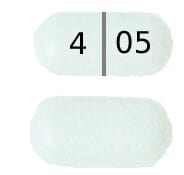Uses
Ethacrynic acid is used to treat edema (fluid retention; excess fluid held in body tissues) in adults and children caused by medical problems such as cancer, heart, kidney, or liver disease. Ethacrynic acid is in a class of medications called diuretics (‘water pills’). It works by causing the kidneys to get rid of unneeded water and salt from the body into the urine.
Side Effects Of Ethacrynic Acid
Ethacrynic acid may cause side effects. Tell your doctor if any of these symptoms are severe or do not go away:
- frequent urination (should not last longer than a few weeks)
- nausea
- vomiting
- loss of appetite
- stomach pain
- difficulty swallowing
- loss of appetite
- thirst
- muscle cramps
- weakness
- headache
- diarrhea
Some side effects can be serious. If you experience any of the following symptoms, stop taking ethacrynic acid and call your doctor immediately:
- severe, watery diarrhea
- loss of hearing
- confusion
- loss of balance
- ringing or fullness in the ears
- yellowing of the skin or eyes
- unusual bleeding or bruising
- rash
- hives
- difficulty breathing or swallowing
Ethacrynic acid may cause other side effects. Call your doctor if you have unusual problems while you are taking this medication.
Warnings & Precautions
Before taking ethacrynic acid:
- tell your doctor and pharmacist if you are allergic to ethacrynic acid, any other medications, or any of the ingredients in the tablets. Ask your doctor or pharmacist for a list of the ingredients.
- tell your doctor and pharmacist what prescription and nonprescription medications, vitamins, nutritional supplements, and herbal products you are taking or plan to take. Be sure to mention any of the following: aminoglycoside antibiotics such as amikacin and gentamicin (Garamycin); anticoagulants (‘blood thinners’) such as warfarin (Coumadin, Jantoven); cephalosporin antibiotics such as cefaclor, cefadroxil, and cephalexin (Keflex); corticosteroids such as dexamethasone, hydrocortisone (Cortef), methylprednisolone (Medrol), prednisolone (Prelone), or prednisone (Rayos); digoxin (Lanoxin), lithium (Lithobid); and nonsteroidal anti-inflammatory medications such as ibuprofen (Advil, Motrin) and naproxen (Aleve). Your doctor may need to change the doses of your medications or monitor you more carefully for side effects.
- tell your doctor if you have kidney disease. Your doctor may tell you not to take ethacrynic acid.
- tell your doctor if you have or have ever had diabetes, gout, or liver disease.
- tell your doctor if you are pregnant, plan to become pregnant, or are breastfeeding. If you become pregnant while taking ethacrynic acid, call your doctor.
- talk to your doctor about the risks and benefits of taking ethacrynic acid if you are 65 years of age or older. Older adults should not usually take ethacrynic acid because it is not as safe as other medications that can be used to treat the same condition.
Ethacrynic Acid Dosage
Ethacrynic acid comes as a tablet to take by mouth. It is usually taken once or twice a day with food or after meals depending on your doctor’s instructions. Take ethacrynic acid at around the same time(s) every day. Follow the directions on your prescription label carefully, and ask your doctor or pharmacist to explain any part you do not understand. Take ethacrynic acid exactly as directed. Do not take more or less of it or take it more often than prescribed by your doctor.
Other
Keep all appointments with your doctor and the laboratory. Your doctor may monitor your blood pressure and weight during your treatment and may order blood tests to check your body’s response to ethacrynic acid.
Do not let anyone else take your medicine. Ask your pharmacist any questions you have about refilling your prescription.
It is important for you to keep a written list of all of the prescription and nonprescription (over-the-counter) medicines you are taking, as well as any products such as vitamins, minerals, or other dietary supplements. You should bring this list with you each time you visit a doctor or if you are admitted to a hospital. It is also important information to carry with you in case of emergencies.
Source
All information has been provided courtesy of MedLinePlus from the National Library of Medicine and from the FDA.



